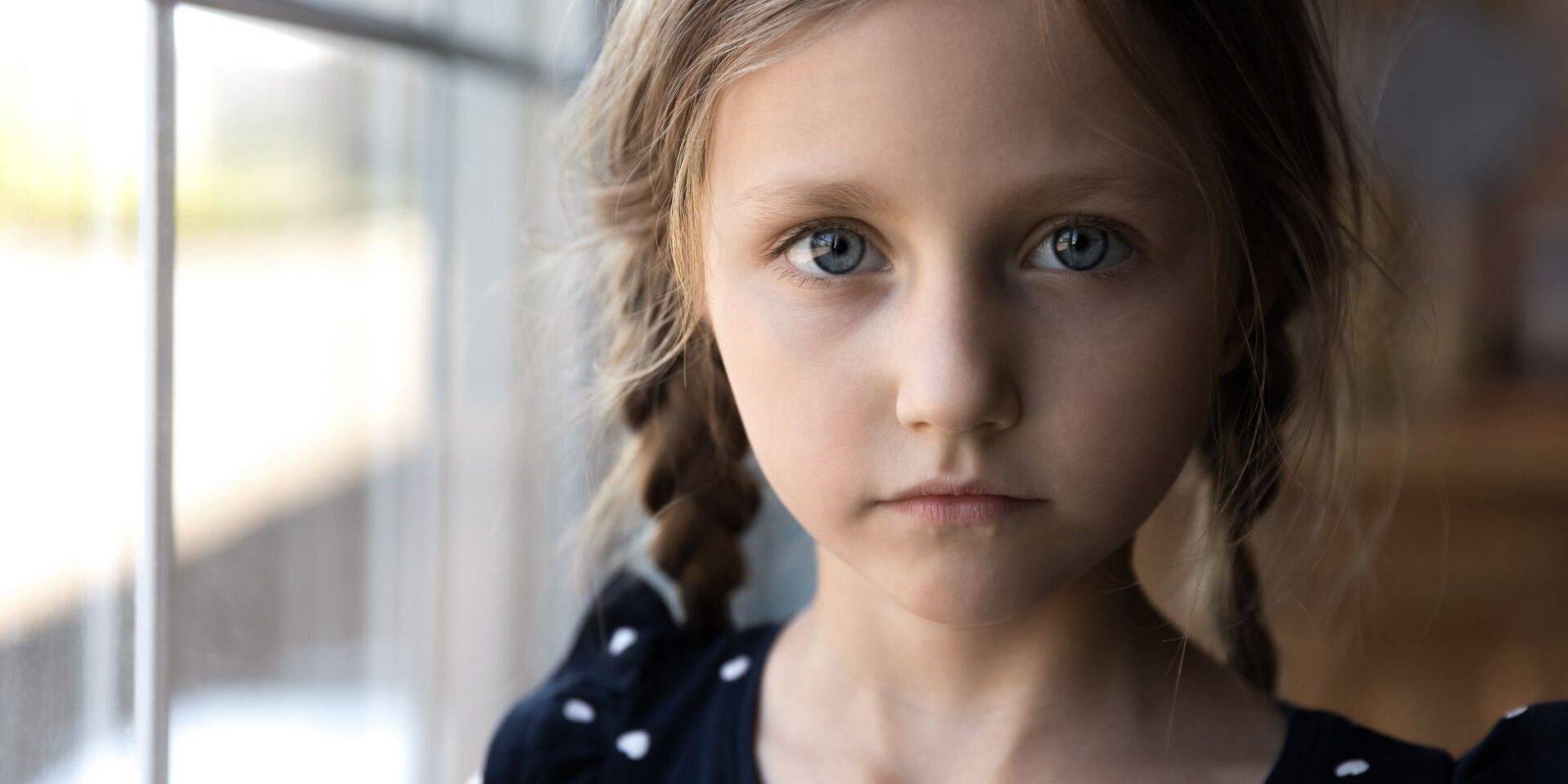There are many stereotypes as to what a person with autism ‘looks like’, ‘acts like’ ‘understands’ and ‘feels’. All children are individuals – all children with autism are individuals. Therefore, we cannot provide one scenario of what a bereaved child will “look like’ or one way we should help them when they are grieving. The same applies to a bereaved child with ASD (Autism Spectrum Disorder). Instead, below is a range of things to consider when supporting a bereaved child who has autism.
Acknowledge their grief
A child may not respond to a death in a way that we expect. They may also not respond in a way that is similar to how other children react. This does not mean that they are not grieving.
Are they affected by the death?
You may be unsure as to how much the child is affected by a person dying. Think about how the child behaves on a typical day and then assess how far they are deviating from their ‘norm’. Most people who receive bad news will behave a little differently, so we should not be overly concerned when a child with autism does this too. If the child’s reaction involves them becoming angrier and more physical, ensure that they are safe by removing dangerous objects etc. Wait until this physical emotion has passed and then talk to the child using AAC (augmentative and alternative communication). Talk about the person who has died and how it is affecting the child.
Use very clear language
Euphemisms such as ‘they are no longer with us’ will be confusing to children on the autistic spectrum. They may interpret this as ‘the person is no longer living with us. They are living with someone else, so we may get to see them again in the future’. Read our advice on telling a child with special educational needs and disabilities that someone has died.
Use social stories or comic strip conversations
Many children with autism spectrum disorder (ASD) benefit from the use of social stories or comic strip conversations. These help them understand new information or situations. A social story is a short description of an event or situation. The text is often supported with pictures, photos and/or symbols. A comic strip conversation is made up of simple drawings and stick figures which accompany the information. Colour can be added to the words in the comic strip to help represent the emotional content of the statements.
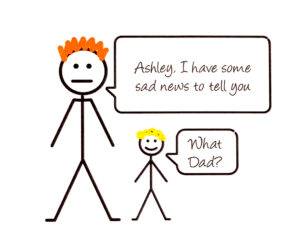
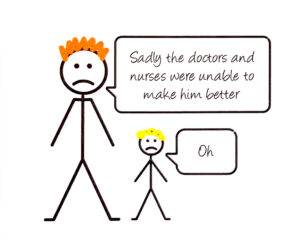
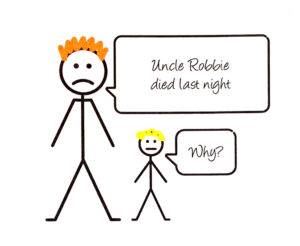
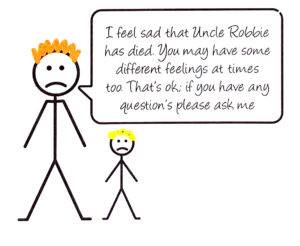
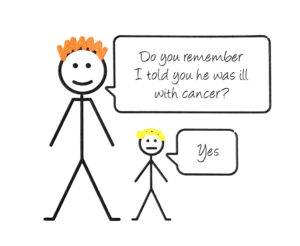
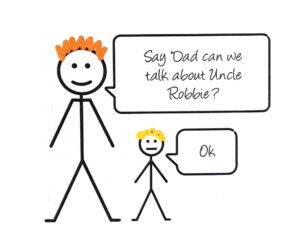
Continued below…
Look for a change in behaviour
A bereaved child with autism may become more impulsive in their behaviour and reactions. Such changes might indicate that they require an even greater level of support to help understand what has happened and why their life has changed in certain ways. Some children with autism may struggle to see how the death is impacting others. They themselves may not be too affected by the bereavement but others around may be, which they cannot understand. This may result in them appearing insensitive to others.
Help to answer tough questions
You may be asked some difficult questions or some that you do not see as important. For example, ‘What temperature is the fire at the crematorium?’. To an unprepared person this could be a very upsetting question. Remember, for the child, this question equals a concern. An unanswered question or concern will lead to anxiety and distress. If you do not know the answer to the question, tell the child you will find out for them and then do so as quickly as possible. If the child has numerous ‘tough questions’ that are all being directed to one person (who is finding it upsetting), find someone who is comfortable answering such queries and ensure the child knows they can go to them with these questions.
Preoccupations may increase
The child’s preoccupations, if they have any (such as reciting lines from favourite cartoons, spinning small objects, playing with water etc.) may increase in intensity following a bereavement or they may develop new preoccupations. Children with autism tend to dislike changes to their routines and a death in the family will typically result in many changes occurring. This can lead to the child’s anxiety levels rising. To help lower their anxieties, keep explaining (using the child’s preferred mode of communication) what has happened and that the death is not their fault.
Talk about rituals and events in advance
After someone has died there are many rituals that can take place. The child will probably never have experienced most of these before, such as dressing up to go to a big building that echoes and having to sit still on a very hard pew. Such things can seem strange and bewildering. Talk to the child about such events and rituals in advance of them taking place. If possible, support this with a social story and having practice runs, e.g. visiting the church before the funeral etc.
Sensory difficulties
A child with autism may experience sensory difficulties (issues with smells, sounds, textures, light etc.). There can be many sensory elements associated with funerals – wearing restrictive formal clothes to a memorial service, the scent of flowers, the feeling of sitting on hard seats and immovable pews. If your child experiences such sensory difficulties, try to:
- Alleviate as many of these as possible (e.g. do they have to wear a shirt and tie to the service?)
- Adapt to the situation (e.g. take their favourite cushion and blanket to the church for them to sit on)
- Prepare them for the differences that are going to occur with social stories, trials of the sensory issue (e.g. practise wearing different shoes) and visits (to the new environment they will be visiting)
Getting professional grief support
If you are supporting a child or young person who is struggling with their grief, please call our Freephone Helpline team on 08088 020 021 (8am -8pm, weekdays), email ask@winstonswish.org or use our live chat (8am-8pm, weekdays).We are here to help and can provide advice, support, and resources. Winston’s Wish provides support for children, young people up to the age of 25 and adults supporting them.
You may also like

Supporting bereaved children with SEND
Advice and resources to support a child or young person with special educational needs and disabilities after the death of someone important.

Specialist book: We All Grieve
Practical advice to help adults supporting grieving children and young people with SEND. Includes information, practical suggestions and activities.


